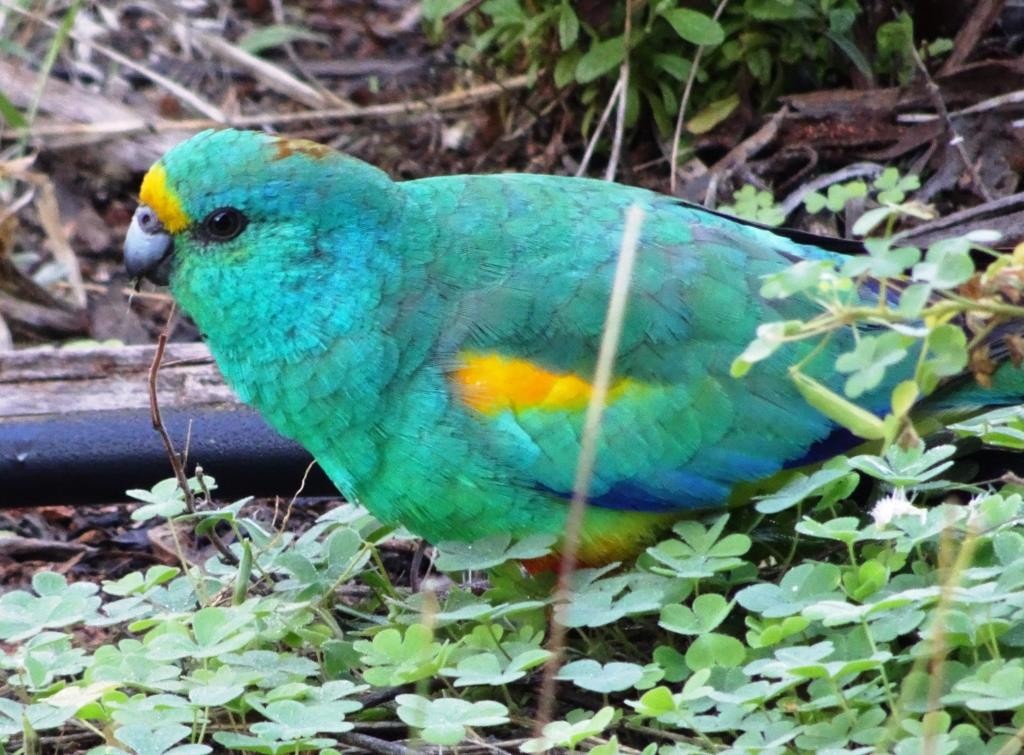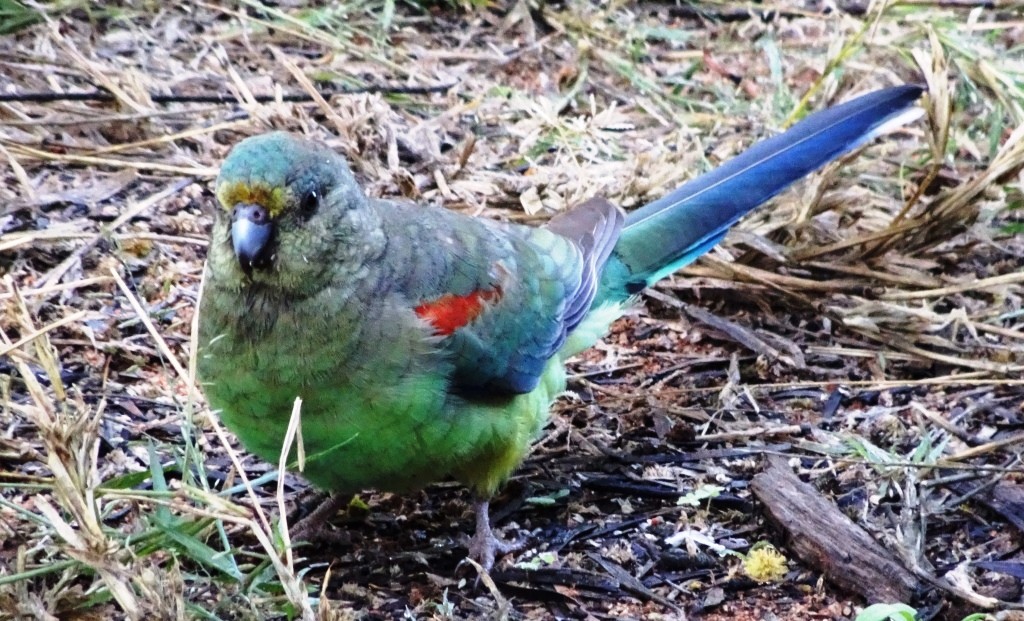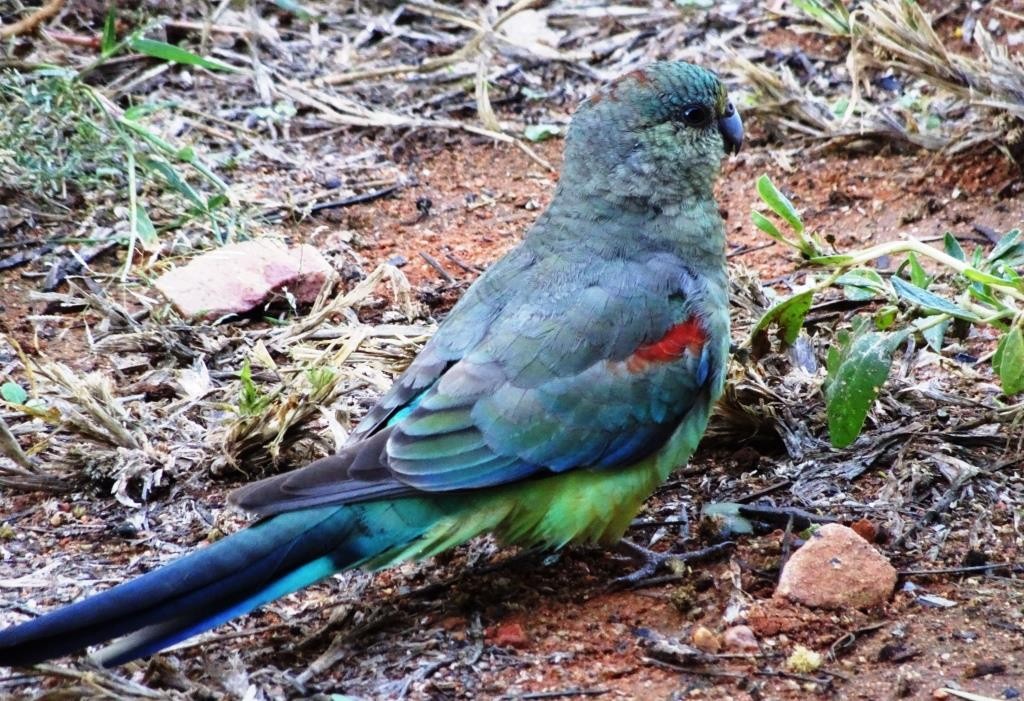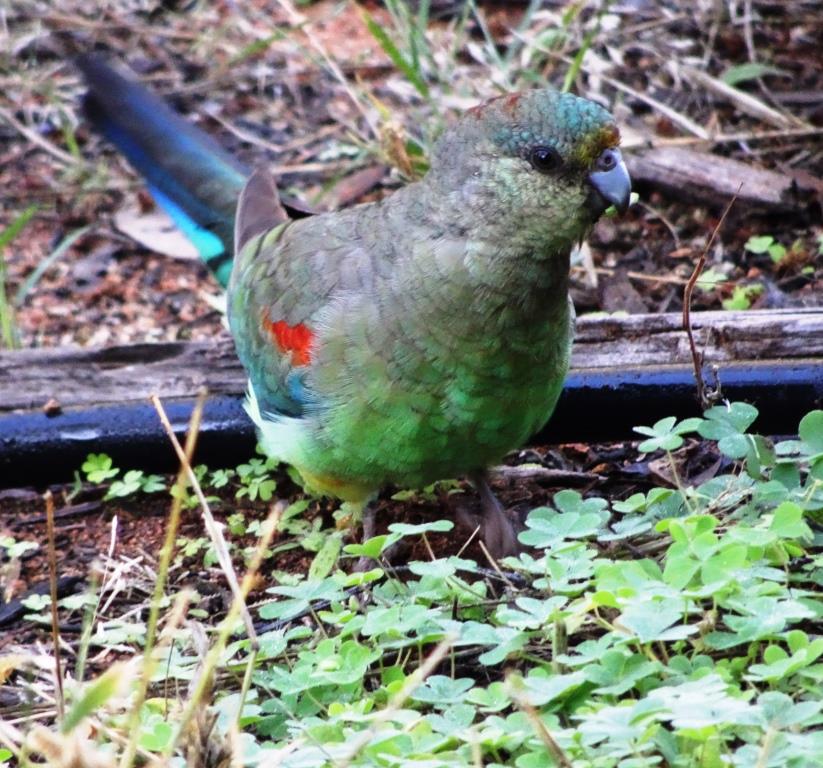Mulga Parrots (Psephotus varius) were seen foraging near the Land for Wildlife office earlier in the month. The scientific nomenclature, Psephotus varius, translates to ‘variegated mosaic bird’:
- Variegated from the Latin Varius, owing to the mixture of colours (especially in the male)
- Mosaic bird from the Greek Psephotos (inlaid with mosaic or precious stones), owing to the pattern of cheek feathers
Mulga Parrots are found in arid and semi-arid shrublands or woodlands, mostly where there is some significant ground cover in which to forage – eating the seeds of grasses, shrubs and trees, as well as flowers and fruit. Their numbers have declined in some parts of Australia, though the reason for their decline is unclear (may be vulnerable to predation by introduced mammals while foraging on the ground). While the occasional individual may be found in the Alice Springs township, they are more likely to be found in the rural areas.
They are one of the prettiest parrots in central Australia and it is easy to tell the sexes apart, as they exhibit sexual dimorphism (different appearance for males and females). The female is a little smaller and has muted colours in comparison to the bright emerald greens of the male. Mulga Parrots are monogamous, travelling in pairs rather than flocks. They breed in tree hollows or creek embankments in spring or after good rains, where the female is responsible for incubating the small white eggs.
See the Birds in Backyards website or the Alice Springs Desert Park website for more information.
Categories:
Bird, Bird Watching



